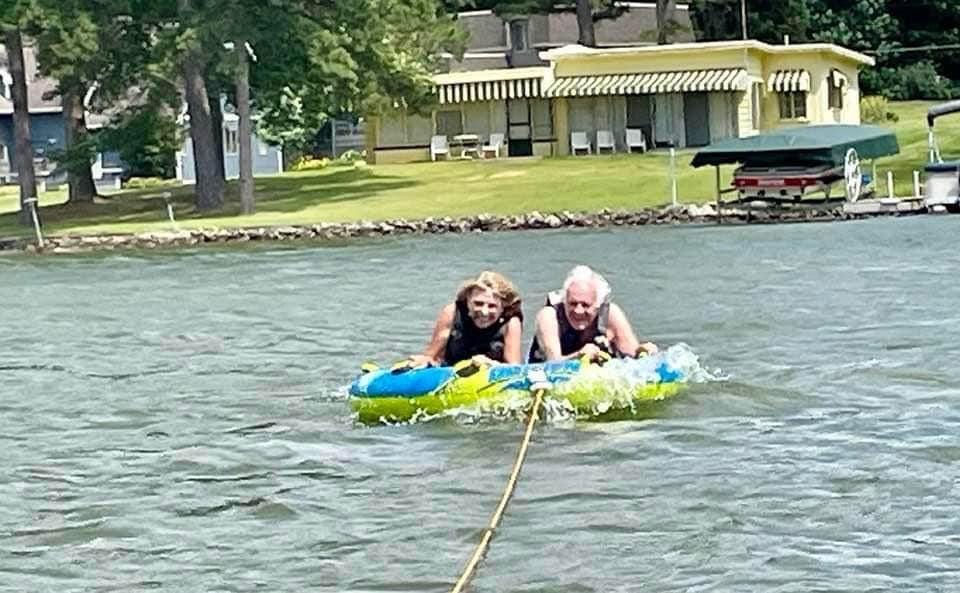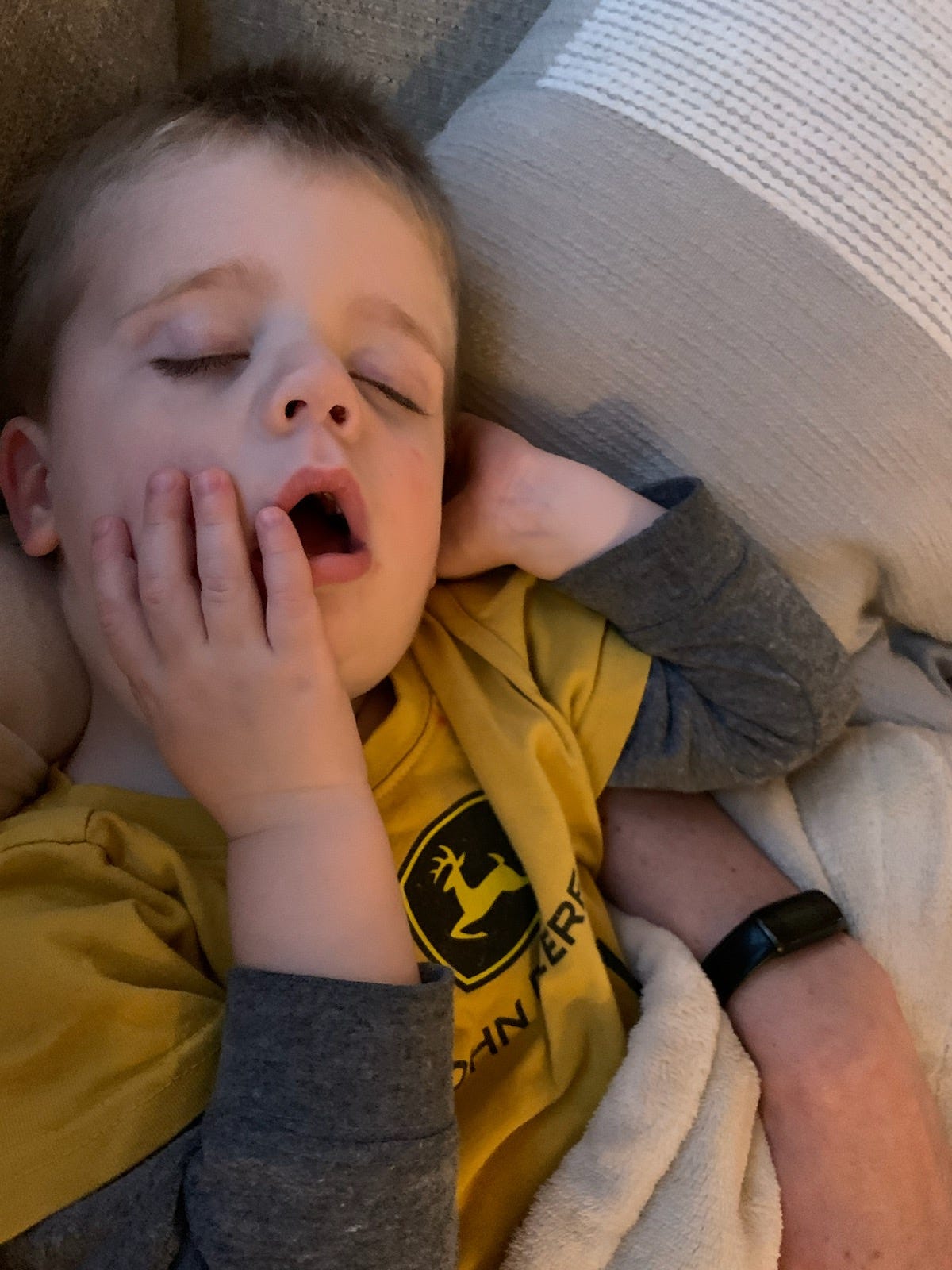Research Roundup - Balance
What is “balance”?
Balance is the body’s ability to maintain its center of mass over its base of support. If you have “good balance”, you have the ability to remain in an upright and stable position and distribute your weight in a way that lets you stand or move without falling. Good balance is also demonstrating the ability to recover your balance if you trip or stumble. In other words, balance is the ability to not fall over.
Why is balance important?
First and foremost, balance is important for one obvious reason: to minimize your risk of an injurious fall. I will spare you the stats, but falls are more common as we age and a fall that leads to an injury can have a lot of nasty downstream consequences.
Just as important, and maybe less obvious, is the effect that poor balance (and fear of falling) can have on your quality of life and self-confidence. Many people that have a fear of falling restrict their activities. This activity restriction leads into a downward spiral of inactivity, deconditioning, muscle weakness, loss of confidence and as a result, further increases their risk of falling.
A fear of falling also causes individuals to participate less in social activities, leading to a reduced quality of life. These folks might choose to stay home instead of attending the basketball game with their friends out of a fear they might fall while going down the bleachers, for example.
A 2019 research paper looked at the influence of fear of falling on quality of life. From the author:
“Our results demonstrate a robust association of lower levels of fear of falling and higher perceived quality of life. Furthermore, the relationship appears to be more important than other basic variables such as age and gender.
While activity avoidance may protect from dangerous situations….it may be maladaptive if it exceeds a certain level, and thereby, the fear becomes debilitating, initiating a vicious cycle of activity reduction and physical and mental decline.”
In addition to having a negative impact on quality of life, a fear of falling can also increase your risk for depression and a loss of self-confidence. This fear can cause some individuals to become over-cautious, causing them to miss out on the activities they enjoy and could result in social isolation. In other words, maintaining or improving your balance enhances your quality of life, promoting an active lifestyle while safeguarding your physical and mental health.
What are the components of balance?
In order to improve your balance, it helps to know which body systems are responsible for keeping you upright. This knowledge will allow you to target the faulty link and improve your balance. Your body relies on three main systems to keep you from taking a spill:
Visual system
Vestibular system (inner ear)
Somatosensory system (sensory nerves and brain)
Your brain receives feedback from all three systems about your body’s orientation and integrates this information into a corrective response by selectively activating the correct muscles to maintain your balance. If one system fails or is not properly functioning, the other two systems must pick up the slack in order to keep you balanced. We will briefly discuss the role of each system in relation to balance below.

Visual System
In regards to your balance, your eyes send messages to your brain regarding the distance of an object (depth perception) and your body’s position in space (spatial awareness). Your eyes also communicate with your inner ear to coordinate the movement of your eyes to maintain a stable image while your head is moving. Visual acuity impairments and visual field cuts have been shown to be primary factors in recurrent falls. If you are having balance issues, it may be a good idea to make an appointment with your optometrist to make sure that your vision is not the culprit.
Vestibular system
The vestibular system is located in your inner ear and is made up of a series of fluid-filled canals, organs, receptors and nerves that are responsible for providing your brain with information about motion, head position, and spatial orientation. The vestibular system is also involved with motor functions that allow us to keep our balance, stabilize our head and body during movement, and maintain posture.
Dysfunction of the vestibular system can result in various symptoms including dizziness, nausea, hearing impairments and vertigo that can often occur with conditions such as BPPV or Meniere’s Disease. If you experience any of these symptoms consistently, especially if brought on by head movements, you may want to visit an Ear, Nose and Throat (ENT) provider for diagnosis and treatment.
Somatosensory System
The somatosensory system is a network of nerves throughout your body that relays information about the world to your brain. The somatosensory system gives information to your brain about your body position, touch, temperature and pain.
In regards to balance, the nerves and receptors of the somatosensory system relay information to your brain about the surface you are standing on (hard, soft, uneven, rocky, wet, etc.) and the position of your joints in space. Based off of this information, and assuming your somatosensory system is functioning properly, your brain then causes the correct muscles to contract in the correct sequence to maintain your balance.
One common dysfunction of the somatosensory system is peripheral neuropathy. Peripheral neuropathy is a condition in which the nerves located outside of the brain become damaged. These nerves can be damaged for a variety of reasons but some of the most common causes are diabetes, infection, physical damage to the nerve, lumbar spine disorders, cancer, certain medications and many others.
If you have neuropathy, the information your nerves are sending back to your brain in regards to the surface in which you are standing and the position of your body in space is incorrect. This faulty information makes it more difficult for your brain to contract the correct muscles to maintain your balance.
What are some steps you can take to minimize your risk of a fall?
Before we go into detail about action you can take at home to reduce your risk of falling, a brief discussion on falls…
Some falls are unavoidable. The world is an unpredictable place and you can’t control every variable. Sometimes, the dog runs in front of you when you least expect it. Of course, we want to avoid a fall that results in an injury but we also don’t want to be so fearful of falling that we avoid participating in life.
At times, our society is so focused on avoiding a fall that it causes an irrational fear in individuals. As we have discussed, being excessively cautious can result in a lower quality of life and an ugly cycle of reduced physical activity and social participation. It can significantly narrow your world and your possibilities. The goal should be to build up your resilience and strength enough that if you do fall, you’re strong enough to get up off of the floor on your own and go about your day as if nothing happened. Do all that you can to minimize your risk of a fall (see below) and then get out there and enjoy all that life has to offer.
Here are four steps you can take to reduce your risk of falling:
Stay physically active - stronger folks fall less (more on this below)
Have your vision and hearing checked annually and update your eyeglasses if necessary
Keep your home safe - click here for a room by room list of changes you can make to your house to lessen your risk of a fall at home
Tell your doctor or pharmacist about any medications that cause you to become dizzy
What are the most effective interventions in preventing falls?
A 2017 review published in The Journal of the American Medical Association assessed the effectiveness of various interventions for preventing falls. They reviewed a total of 283 studies and found that the most effective interventions to reduce your risk of an injurious fall is a combination of exercise and vision assessment/treatment. This combination reduced the risk of an injurious fall by 83%! That’s a substantial reduction with just two interventions.
What type of exercise is most effective in improving your balance?
It seems that two broad categories of exercises are most effective in improving balance: resistance training and balance exercises. A 2017 review in the British Journal of Sports Medicine reviewed the current evidence on the effectiveness of exercise to prevent falls. From the author:
“There is strong evidence that appropriately designed intervention programmes can prevent falls.
This systematic review with meta-analysis provides strong evidence that exercise as a single intervention prevents falls in people living in the community. The meta-regression suggests programmes that involve a high challenge to balance and include more than 3 hours/week of exercise have greater fall prevention effects.”
To summarize, exercise is effective in reducing falls. You should be performing both lower extremity strengthening exercises and balance exercises. The balance exercises need to be challenging to be effective (if it doesn’t challenge you, it doesn’t change you) and these exercises need to be performed at least three hours per week.
Longevity Bloomington Walking Club
We are excited to announce the formation of the Longevity Bloomington Walking Club! We are still working out the details, but this will be an informal meet up of folks that are looking for people their own age to go walking. All ability levels are welcome, and walkers choose their own pace. The group is free and you do not need to be a Longevity Bloomington member to participate. Any individual 50+ is welcome.
The time, day and location will be sent out via email (see below) a few days prior to the walk. The difficulty of the walks will vary from flat, paved trails around town to hiking in the woods at our many excellent parks in and around Bloomington. We will specify the relative difficulty of the particular walk beforehand so that you may choose whether or not to participate.
If you wish to be added to the Longevity Bloomington Walking Club email list and receive updates click here: https://bit.ly/longevitybloomingtonwalkingclub
By adding your email to the list, you will receive the latest information about the walking club, including the time, day and location of each event. Please share the link with any of your friends that you think might be interested!
Member Spotlight - Jo Lee
How long have you been a member of Longevity?
I joined in August of this year.
What is your favorite exercise at Longevity? Least favorite?
Favorite Exercise: The bands. Least Favorite: Squats, but I am challenged to get better doing them.
Where are you from originally? Where did you go to school?
I’m from Nebraska. (Go Huskers!) I received my BAE in Elementary Education and Special Education from Wayne State College and did graduate work at the University of Nebraska.
What brought you to Bloomington if you are not from the area originally?
We moved to Bloomington in 2010 when my husband accepted a position as Quality Control Manager with Baxter Pharmaceuticals.
Tell us about your family. Any information about spouse, kids, grandkids that you would like to share!
My husband, Roger, and I celebrated our 40th Wedding Anniversary this year. We have two married daughters, both of whom reside in the Seattle area. We have one granddaughter and one grandson.
What do you do for work? If retired, what did you do for work?
I’m retired, but spent the majority of my career in education as a teacher and staff developer. I also worked in educational testing.
If you had to eat one meal every day for the rest of your life, what would it be?
I really enjoy trying new foods and cuisines, but could live on pot roast, roasted potatoes and carrots.
What is your favorite hobby?
Favorite Hobby…something creative. I like needlework, scrapbooking and card making.
What’s something about you that not many people know?
One thing most people don’t know about me is that I was born without a sense of smell. Please be sure to come get me if you smell smoke in the building, because I won’t!
What do you like to do when you’re not working out at Longevity?
If I’m not at Longevity, I enjoy volunteering with Road to Recovery through the American Cancer Society. I provide rides for patients to any cancer related appointment. I also enjoy travel, playing Euchre, and general high jinks with my girlfriends.
Favorite restaurant in Bloomington?
That would be a toss up between My Thai and India Garden.
Favorite place you have ever been?
The most favorite place I’ve been is Italy. I’d go back in a heartbeat.
Anything else you'd like to talk about?
Finding Longevity has been one of this year’s highlights for me. It’s exactly what I needed and didn’t know existed for the longest time. I feel myself getting stronger and moving better. It’s been fun to do classes with the friends I already knew and the friends I’ve made in class. I truly love it. Thanks, Ben for your encouragement and patience!
A Case Study in Longevity: My Grandparents
We are big fans of diving into the latest research around all things longevity. Sometimes though, it helps to see some real life examples of people that are putting the things we talk about each month into action. Great examples of this are my grandparents - Jerry and Linda Finley.
Jerry just celebrated his 85th birthday and I will not disclose my grandmother’s age because I know better. I am biased, but I think I won the grandparent lottery. Consciously or subconsciously, my grandparents were the inspiration for me starting Longevity Bloomington.
Jerry and Linda spend most of the year in Florida in an active adult retirement community. And boy, do they stay active. Their social calendar is full of a myriad of activities with friends. They participate in more social activities in a week than I do in most calendar years. They eat well and move often. They check the box on nearly all of the 7 Keys to Longevity (my grandpa could use a little more sleep!).
Luckily for us, Jerry and Linda also spend two months of the year in Bloomington spending time with family over the holidays. This return to Indiana does not slow them down. Here they are tubing at a lake this summer (my grandpa is 85!).
When they are back in Indiana, they spend most of their time with family. A few weeks ago, they were kind enough to watch my two-year-old son for two full days when his daycare was closed for Christmas break. After they left for the day, my wife sent me this picture.
My son could not hang with them. He was worn out from all of the Magna-Tile construction and garbage truck driving. When I got home from work that day, Jerry and Linda were still full of energy. On days that I am tasked with wrangling our son on my own, I am the one that needs the nap. After watching a two-year-old all day, they were headed to dinner and then to the IU women’s basketball game! I hope to have half as much energy as these two when I am their age.
You don’t need to go tubing or have a packed social calendar. Find what works for you and fits your personality. Try to accomplish as many of the seven keys to longevity as you can in your own way.
New Members
Welcome to Longevity Bloomington! It has been great having you all in class.
Well Attended
We would like to recognize the Longevity Bloomington members that made it to all or most of the classes since our most recent newsletter. Well done! Special shoutout to the Lawler brothers for not missing a class in 3 months and Judy C. and Terry M. for having 2 months without a missed class!
200 Class Club
Please welcome Pat Murphy to the 200 class club! Pat always works hard and is very consistent in his attendance to class. Well done, Pat!
Longevity Bloomington Apparel
Longevity Bloomington t-shirts and sweatshirts are available for sale until January 14th. You can view/purchase the apparel here: https://my-sports-locker.printavo.com/merch/longevity-bloomington-2024.

















